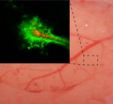(Press-News.org) NEW YORK -- September 12, 2012 -- The musician Paul Simon came to fame collaborating with his childhood friend Art Garfunkel, yet launched another chapter with his Graceland album, collaborating with musicians from Soweto. Ratan Tata made his name expanding his family's firms in India, yet in recent decades has reached even greater success helping foreign firms such as Daewoo and Jaguar find new markets.
Whether artists, entrepreneurs, or executives, some individuals are especially able to bridge cultural gaps and leverage foreign ideas and opportunities. Why can some people collaborate creatively all around the world while others succeed only with people quite similar to themselves? Are there psychological characteristics that distinguish global collaborators? Do they form different kinds of relationships?
New research by Michael Morris, the Chavkin-Chang Professor of Leadership at Columbia Business School, finds that mindfulness about cultural assumptions is a key driver. People who are habitually aware of their cultural frameworks tend to develop more affectively trusting relationships with people from other cultures, opening the free flow of ideas that is intrinsic to creative collaboration. The paper, published in Organizational Behavior and Human Decision Processes, is led by former Columbia Business School doctoral student Roy Y.J. Chua (currently an assistant professor at Harvard Business School) and co-authored by current Columbia Business School doctoral student Shira Mor.
The globalization of business is increasingly creating demand for managers adept at working creatively with people from diverse backgrounds. Researchers have drawn attention to individual differences in cultural metacognition, the proclivity to reflect on and fine-tune one's cultural assumptions when interacting with others. In three studies using different ways of measuring cross-cultural collaboration, Morris's research team found that success can be predicted from an individual's cultural metacognition score, assessed with a survey inventory beforehand.
The first study asked business executives for lists of people from other cultures with whom they have worked over the course of their careers. The researchers then tracked down these associates and surveyed them about many aspects of the executive's management style, including the executive's success in collaborating creatively across cultural lines. These scores of intercultural collaboration success (from the vantage of individuals from different cultures) could be predicted by an executive's cultural metacognition score even when personality and other standard individual differences were controlled.
The second study used a social network survey. Managers were asked to name up to 20 contacts with whom they interact frequently in their work. The computer-driven survey then presented questions about each contact, including the extent to which the contact is source of new ideas—a marker of creative collaboration. The final question of the survey focused on the cultural background of each contact, which allowed the researchers to code each contact as same-culture or different-culture. As expected, the respondents' cultural metacognition scores predicted the extent of collaborative communication in their cross-cultural ties, and not in their same-cultural ties.
Another set of questions in this network survey concerned two kinds of trust that people experience in working relationships. Trust from the heart, a feeling akin to rapport, is known as affective trust. Trust from the head, an evidence-based judgment of another's reliability and competence, is known as cognitive trust. Results showed that the effect of cultural metacognition on collaborative communication in cross-cultural ties was due to higher affective trust, not cognitive trust. In other words, managers low in cultural awareness had a deficit of affective trust in their intercultural ties that predicted the shortfall in their collaborative communications. Lack of mindfulness about their cultural assumptions, it seems, led to relationships lacking the emotional-level trust that begets open sharing of new ideas.
The third study was a laboratory experiment that simulated a creative design task. Students were paired with a design partner from a different cultural background. They were given a set of food ingredients from which they were asked to invent a novel chicken dish for a restaurant. Half of the pairs were assigned to talk informally before the design challenge whereas the other half were sent into it without getting acquainted. Results showed that the pairs who were higher in cultural metacognition succeeded in collaboratively designing dishes that were rated favorably by professional chefs serving as expert judges. These pairs also shared more ideas in their conversation and gave each other higher ratings as collaborators. This effect held in the acquainted condition, where the critical mechanism of trust development could take place, but not in the non-acquainted condition. To summarize, the evidence suggests a causal chain from the individual characteristic of cultural metacognition to the development of greater affective trust in interactions with people from other cultures, resulting in a greater ability to work together creatively.
One key insight from this research is that having a diverse professional network is not enough. For many executives, the creative potential in their cross-cultural relationships goes unrealized, because these relationships lack the trust that fosters open sharing of ideas. Another insight is that mindfulness on one side of an interaction can suffice. In the final study, pairs succeeded as long as one of the two partners had high cultural metacognition and was therefore able to bridge the cultural gap in the interaction.
Fortunately, cultural metacognition is a social intelligence capability that can be developed. One way is through taking on assignments in other countries and actively comparing notes with others to gain a richer sense of how cultural lenses shape perceptions. The research suggests that such an effort should pay off in two ways: closer relationships with associates from different backgrounds, and more success in collaborating on innovative deals or ideas.
###About Columbia Business School
Led by Dean Glenn Hubbard, the Russell L. Carson Professor of Finance and Economics, Columbia Business School is at the forefront of management education for a rapidly changing world. The school's cutting-edge curriculum bridges academic theory and practice, equipping students with an entrepreneurial mindset to recognize and capture opportunity in a competitive business environment. Beyond academic rigor and teaching excellence, the school offers programs that are designed to give students practical experience making decisions in real-world environments. The school offers MBA and Executive MBA (EMBA) degrees, as well as non-degree Executive Education programs. For more information, visit www.gsb.columbia.edu.
Study examines thoughts and feelings that foster collaboration across cultures
2012-09-12
ELSE PRESS RELEASES FROM THIS DATE:
Self-control may not be a limited resource after all
2012-09-12
So many acts in our daily lives – refusing that second slice of cake, walking past the store with the latest gadgets, working on your tax forms when you'd rather watch TV – seem to boil down to one essential ingredient: self-control. Self-control is what enables us to maintain healthy habits, save for a rainy day, and get important things done.
But what is self-control, really? And how does it work?
In a new article in the September 2012 issue of Perspectives on Psychological Science, a journal of the Association for Psychological Science, researchers Michael Inzlicht ...
How is grief unique to young adults with cancer?
2012-09-12
New Rochelle, NY, September 12, 2012—The life disruption and losses experienced by young adults battling advanced cancer can result in a unique burden of grief that is too often overlooked, as described in an article in Journal of Adolescent and Young Adult Oncology (JAYAO), (http://www.liebertpub.com/JAYAO) a multidisciplinary peer-reviewed publication from Mary Ann Liebert, Inc., publishers. (http://www.liebertpub.com) JAYAO is the Official Journal of the Society for Adolescent and Young Adult Oncology. The article is available free online at the JAYAO (http://www.liebertpub.com/JAYAO) ...
New clinical guidelines for managing hypothyroid disease presented in Thyroid Journal
2012-09-12
New Rochelle, NY, September 12, 2012—New evidence-based guidelines have been released for the diagnosis and treatment of hypothyroidism, a complex disease caused by an underactive thyroid gland that cannot produce enough thyroid hormone. These updated clinical recommendations are published in Thyroid (http://www.liebertpub.com/thy), a peer-reviewed journal from Mary Ann Liebert, Inc., publishers (http://www.liebertpub.com). The new guidelines (http://online.liebertpub.com/doi/pdfplus/10.1089/thy.2012.0205), developed jointly by the American Thyroid Association (ATA) (http://www.thyroid.org) ...
With food insecurity rising in US, SNAP benefits should be left alone
2012-09-12
CHAMPAIGN, Ill. — In a time of record-high food insecurity rates in the U.S., cutting the Supplemental Nutrition Assistance Program (the former Food Stamp Program) is the wrong approach to fighting hunger, says a University of Illinois economist who studies the efficacy of food assistance programs on public health.
Whether it's some Republicans who have proposed modifying funding, or some Democrats who have proposed restricting what kind of food beneficiaries are allowed to buy, restructuring SNAP would likely only lead to more food insecurity, says Craig Gundersen, a ...
Body heat, fermentation drive new drug-delivery 'micropump'
2012-09-12
WEST LAFAYETTE, Ind. – Researchers have created a new type of miniature pump activated by body heat that could be used in drug-delivery patches powered by fermentation.
The micropump contains bakers yeast and sugar in a small chamber. When water is added and the patch is placed on the skin, the body heat and the added water causes the yeast and sugar to ferment, generating a small amount of carbon dioxide gas. The gas pushes against a membrane and has been shown to continually pump for several hours, said Babak Ziaie, a Purdue University professor of electrical and computer ...
Hearing impaired ears hear differently in noisy environments
2012-09-12
WEST LAFAYETTE, Ind. - The world continues to be a noisy place, and Purdue University researchers have found that all that background chatter causes the ears of those with hearing impairments to work differently.
"When immersed in the noise, the neurons of the inner ear must work harder because they are spread too thin," said Kenneth S. Henry, a postdoctoral researcher in Purdue's Department of Speech, Language and Hearing Sciences. "It's comparable to turning on a dozen television screens and asking someone to focus on one program. The result can be fuzzy because these ...
Planets can form in the galactic center
2012-09-12
At first glance, the center of the Milky Way seems like a very inhospitable place to try to form a planet. Stars crowd each other as they whiz through space like cars on a rush-hour freeway. Supernova explosions blast out shock waves and bathe the region in intense radiation. Powerful gravitational forces from a supermassive black hole twist and warp the fabric of space itself.
Yet new research by astronomers at the Harvard-Smithsonian Center for Astrophysics shows that planets still can form in this cosmic maelstrom. For proof, they point to the recent discovery of a ...
Improved nanoparticles deliver drugs into brain
2012-09-12
The brain is a notoriously difficult organ to treat, but Johns Hopkins researchers report they are one step closer to having a drug-delivery system flexible enough to overcome some key challenges posed by brain cancer and perhaps other maladies affecting that organ.
In a report published online on August 29 in Science Translational Medicine, the Johns Hopkins team says its bioengineers have designed nanoparticles that can safely and predictably infiltrate deep into the brain when tested in rodent and human tissue.
"We are pleased to have found a way to prevent drug-embedded ...
Newly discovered letters and translated German ode expand Texas link to infamous Bone Wars
2012-09-12
In the late 1800s, a flurry of fossil speculation across the American West escalated into a high-profile national feud called the Bone Wars.
Drawn into the spectacle were two scientists from the Lone Star State: geologist Robert T. Hill, now acclaimed as the Father of Texas Geology, and naturalist Jacob Boll, who made many of the state's earliest fossil discoveries.
Hill and Boll had supporting roles in the Bone Wars through their work for one of the feud's antagonists, Edward Drinker Cope. A new study by vertebrate paleontologist Louis L. Jacobs at Southern Methodist ...
Scripps Research scientists devise powerful new method for finding therapeutic antibodies
2012-09-12
LA JOLLA, CA, September 11, 2012 – Scientists at The Scripps Research Institute have found a new technique that should greatly speed the discovery of medically and scientifically useful antibodies, immune system proteins that detect and destroy invaders such as bacteria and viruses. New methods to discover antibodies are important because antibodies make up the fastest growing sector of human therapeutics; it is estimated that by 2014 the top-three selling drugs worldwide will be antibodies.
The new technique, described in an article this week published online ahead of ...








